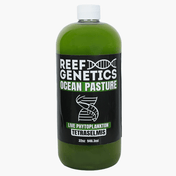Mushroom corals, belonging to the family Discosomatidae, are among the most popular choices for reef aquarium enthusiasts. Known for their vibrant colors, unique shapes, and ease of care, these corals can add a dynamic and visually stunning element to any marine setup. This guide will provide you with all the information you need to care for mushroom corals and ensure they thrive in your aquarium.
Introduction to Mushroom Corals
Mushroom corals, also known as "mushrooms" or "mushroom anemones," are soft corals that come in a wide variety of colors and textures. They are ideal for beginners due to their hardiness and low maintenance requirements. Common species include Discosoma, Rhodactis, and Ricordea, each offering different aesthetic appeals.
Tank Requirements
Tank Size: Mushroom corals can adapt to various tank sizes, from small nano tanks to large reef setups.
Water Parameters: These corals thrive in stable water conditions. Ideal parameters are:
- Temperature: 72-78°F
- pH: 8.1-8.4
- Salinity: 1.023-1.025
- Alkalinity: 8-12 dKH
- Calcium: 400-450 ppm
- Magnesium: 1250-1350 ppm
Regular water testing and maintenance are crucial to keeping these parameters stable.
Lighting: Mushroom corals do not require intense lighting. Moderate to low lighting is sufficient, making them suitable for tanks with standard fluorescent or LED lighting systems. However, their color can be enhanced under higher lighting conditions.
Flow: These corals prefer low to moderate water flow. Too much flow can cause them to retract or become dislodged. Aim for a gentle, indirect current to keep them healthy and fully expanded.
Placement and Compatibility
Placement: Mushroom corals can be placed on rock work or the substrate. They have a tendency to spread and can attach themselves to surfaces, so leave enough space between them and other corals to prevent overgrowth and potential aggression.
Compatibility: Mushroom corals are generally peaceful and can coexist with a variety of other corals and marine life. However, they can exhibit some aggression towards neighboring corals if they come into direct contact, so give them adequate space.
Feeding and Nutrition
Mushroom corals are photosynthetic, deriving most of their nutrition from the symbiotic zooxanthellae algae within their tissues. However, they also benefit from supplemental feeding. Offerings such as phytoplankton, zooplankton, and small meaty foods (like brine shrimp or mysis shrimp) can promote growth and enhance coloration. Feed them once or twice a week.
Propagation
One of the appealing aspects of mushroom corals is their ability to propagate easily. They reproduce both sexually and asexually. A common method of propagation in home aquariums is through "fragging," where a part of the coral is cut and attached to a new surface to grow independently. Ensure clean and precise cuts to avoid damaging the coral.
Common Issues and Solutions
Pests: Like any coral, mushrooms can fall victim to pests such as flatworms or nudibranchs. Regular inspection and quarantine of new additions can help prevent infestations.
Bleaching: If your mushroom corals start losing color, it may be due to stress from lighting, water quality, or temperature fluctuations. Adjusting these conditions usually helps them recover.
Shrinking or Melting: Poor water quality or extreme conditions can cause mushrooms to shrink or melt. Regular water changes and maintaining stable parameters are key to preventing this.
Conclusion
Mushroom corals are a fantastic choice for both beginner and experienced reef keepers. Their ease of care, resilience, and stunning appearance make them a valuable addition to any marine aquarium. By providing the right environment and regular maintenance, you can enjoy the beauty of these fascinating corals for years to come.
If you have any further questions or need more personalized advice, feel free to reach out to the expert team here at Top Shelf Aquatics or visit our store. Happy reef keeping!


















